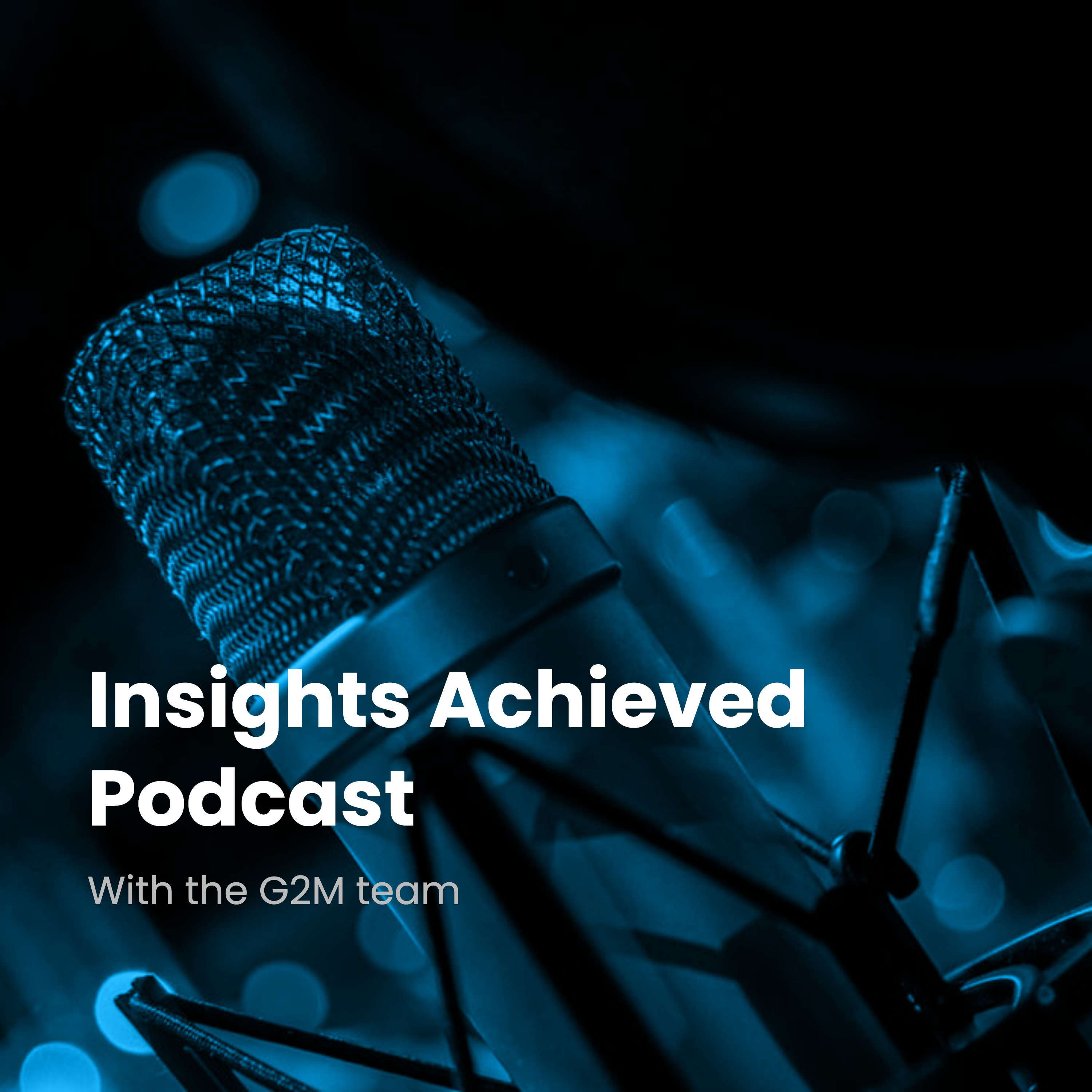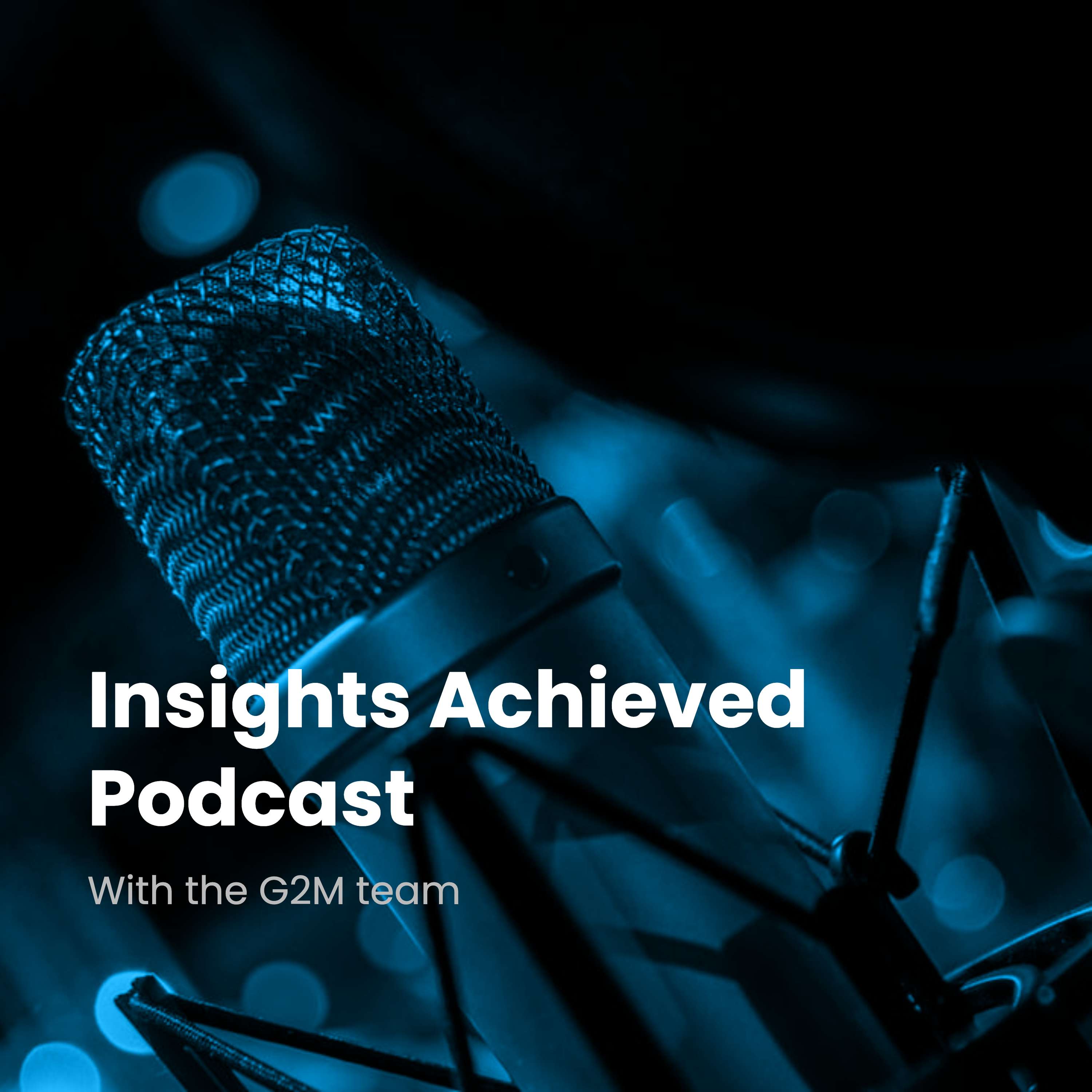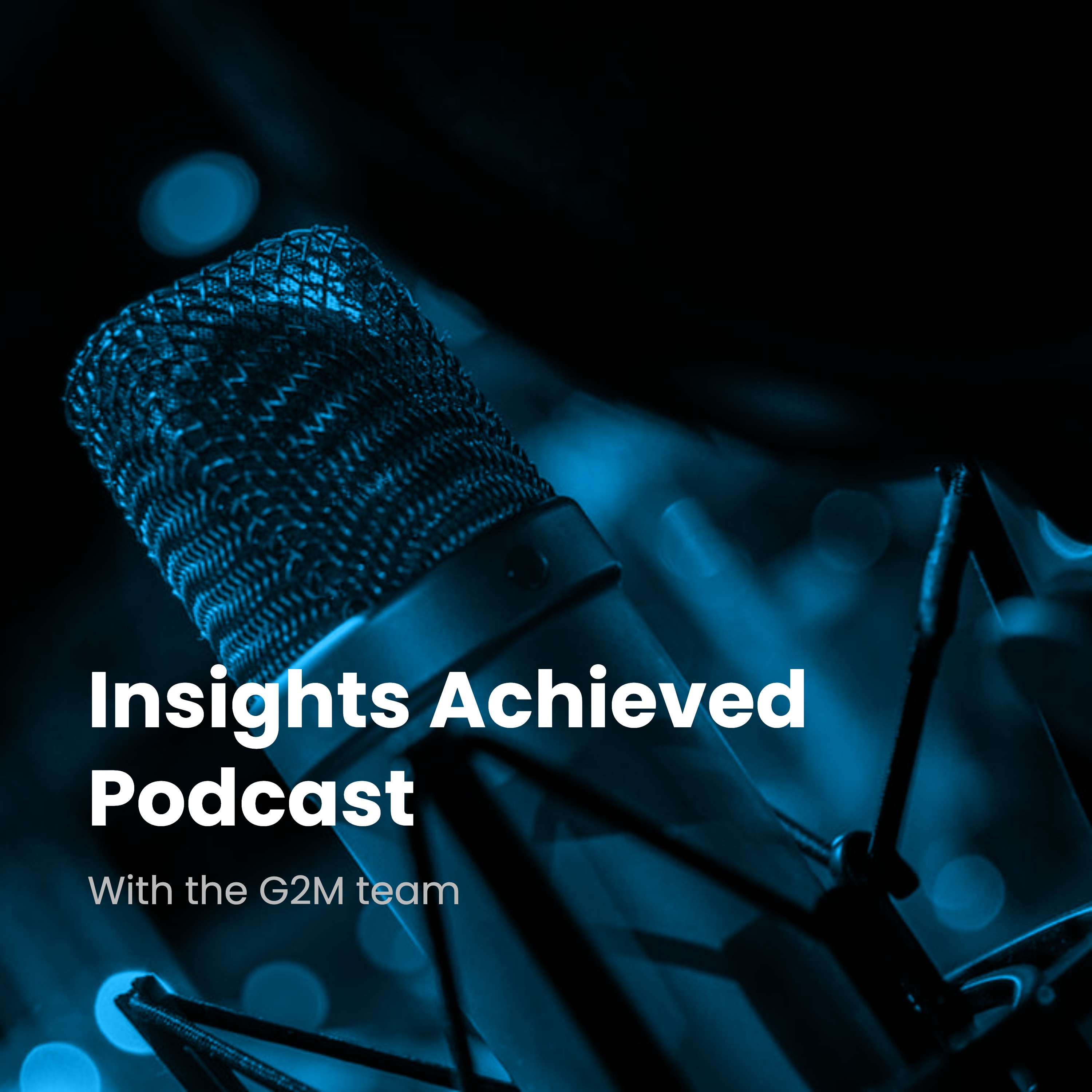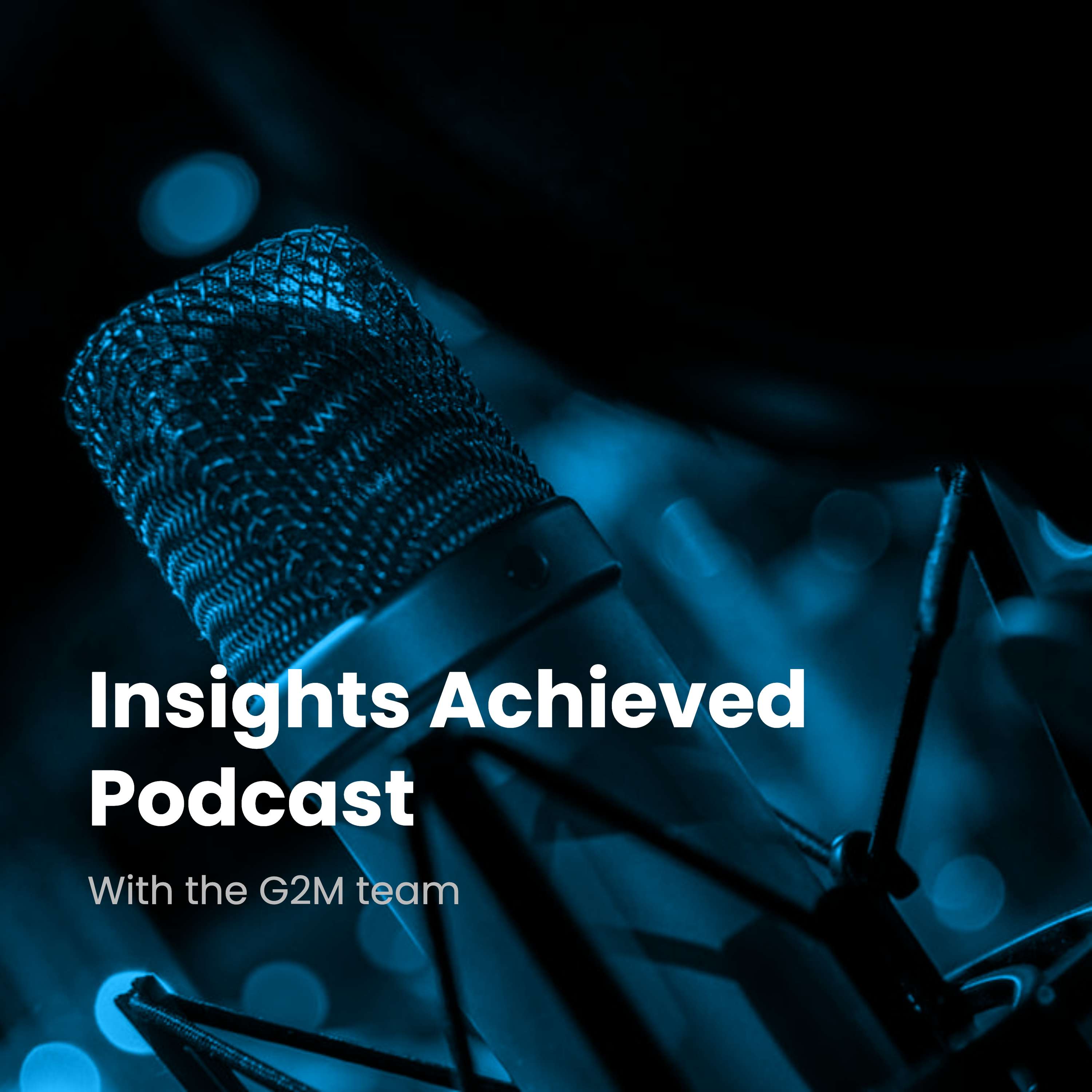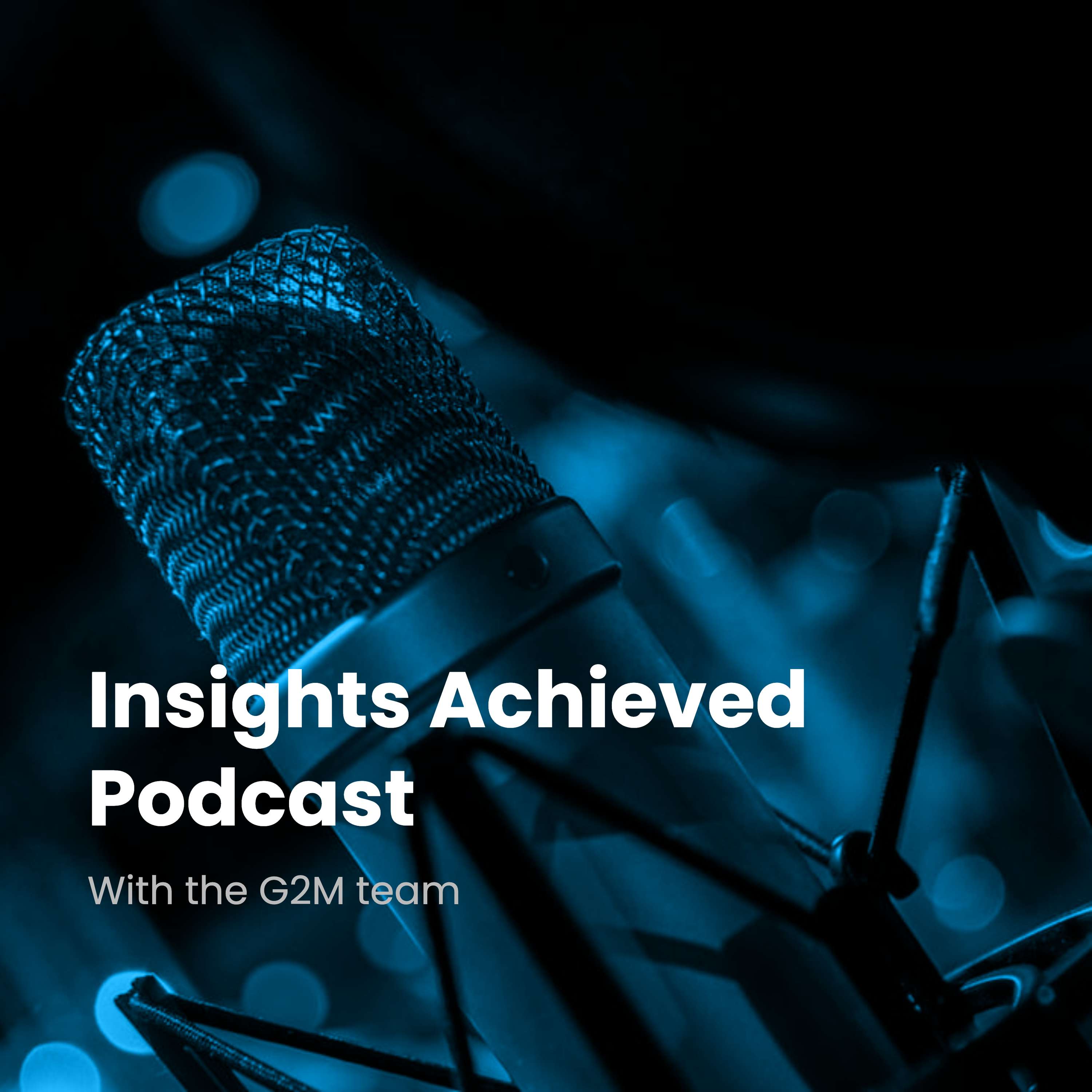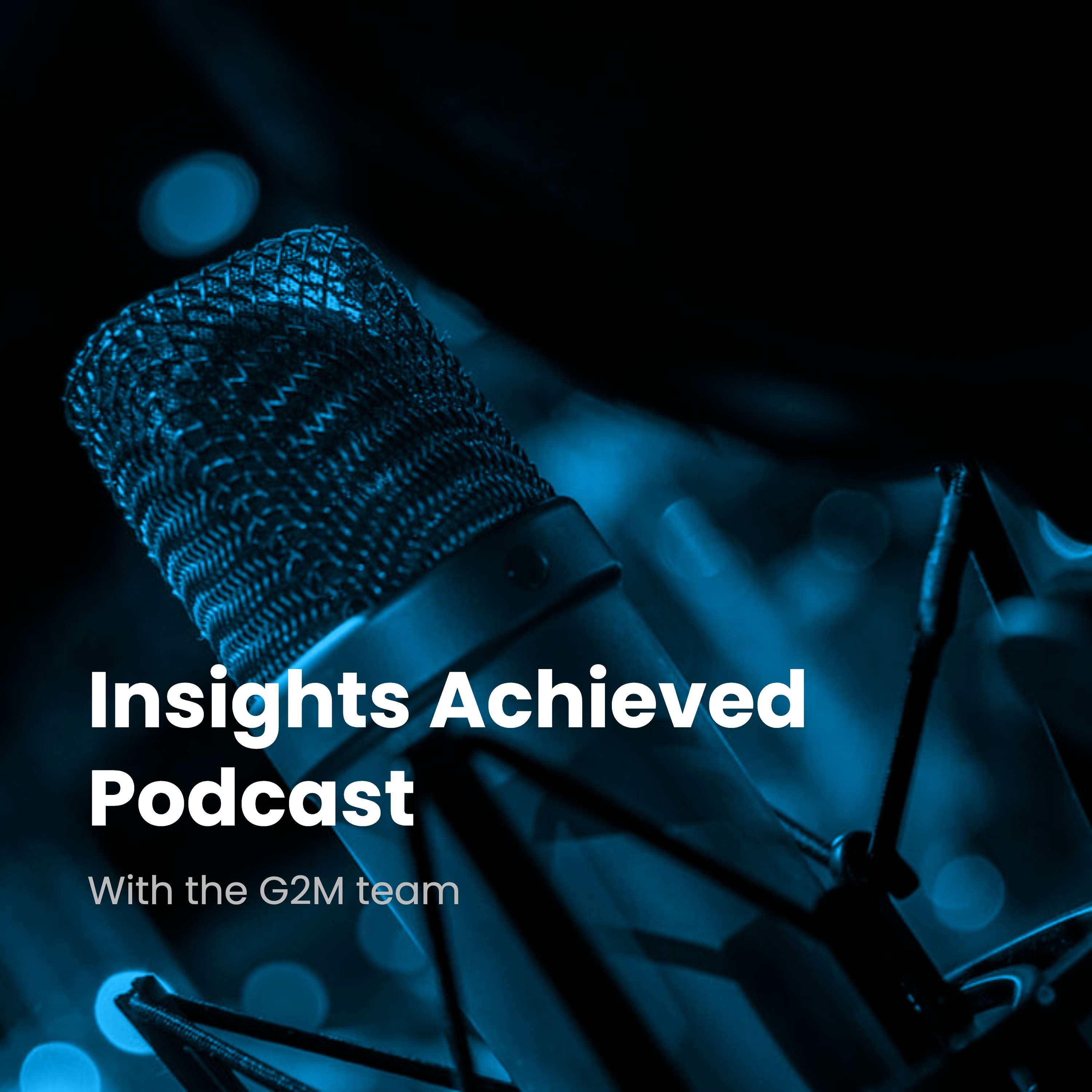Episode Transcript
[00:00:00] Speaker A: Welcome to the deep dive, where we cut through all the noise and get to the insights that matter most to you. That's right, to you. We're diving deep into the world of AI powered segmentation. You know, going beyond just basic demographics to unlock a deeper understanding of your customer base. Yeah, I know you're already familiar with G2M insights, right? But let's really explore how their expertise and clustering can specifically benefit your work as sales and marketing executives.
[00:00:29] Speaker B: Absolutely. And it's really about moving past those traditional segmentation methods. Yeah, you know, the ones that often miss the mark. Think about soccer moms or tech enthusiasts, but with way more data and way more nuance, thanks to AI.
[00:00:45] Speaker A: So we're not just relying on demographics or firmographics.
[00:00:48] Speaker B: Exactly.
[00:00:48] Speaker A: We're using behavioral data, usage patterns, and any other attribute that can help us paint a more accurate picture of our target audience.
[00:00:56] Speaker B: You got it.
[00:00:56] Speaker A: So we're taking all this rich data and using it to group our prospects or customers into segments based on real shared characteristics. But how is this clustering different from the segmentation methods that we're already using?
[00:01:08] Speaker B: Well, imagine trying to sell the same product to, say, Prince Charles and Ozzy Osbourne.
[00:01:13] Speaker A: Okay.
[00:01:13] Speaker B: Same demographics, wildly different buying habits.
[00:01:17] Speaker A: That's a great example.
[00:01:18] Speaker B: AI driven clustering helps you avoid those kinds of misses by delving into the nuances of actual buying behavior.
[00:01:27] Speaker A: Starting to see how this could be incredibly powerful.
[00:01:30] Speaker B: Yeah.
[00:01:30] Speaker A: But let's get practical. What makes for effective clustering?
[00:01:34] Speaker B: Sure.
[00:01:35] Speaker A: What should we be aiming for? When we build these segments, there are.
[00:01:39] Speaker B: Four key elements to keep in mind. Distinct, sizable, identifiable, and meaningful.
[00:01:45] Speaker A: Okay.
[00:01:46] Speaker B: First, your clusters need to be clearly separated.
[00:01:48] Speaker A: Right.
[00:01:49] Speaker B: They gotta show real differences in behavior.
[00:01:52] Speaker A: Or characteristics, so they can't all just blend together.
[00:01:55] Speaker B: If they're all blending together, what's the point exactly. Of segmenting in the first place? Place.
[00:01:59] Speaker A: What's the point?
[00:01:59] Speaker B: Right.
[00:02:00] Speaker A: Makes sense. So how do we ensure our clusters are sizable? Does that just mean having enough people?
[00:02:04] Speaker B: Yeah. In each group it does. To make it worthwhile, you need clusters that are large enough to represent a significant market opportunity.
[00:02:12] Speaker A: Okay.
[00:02:12] Speaker B: A cluster of two people won't move the needle on your sales goals.
[00:02:16] Speaker A: Right.
[00:02:16] Speaker B: But it's also about finding a balance.
[00:02:19] Speaker A: Okay.
[00:02:19] Speaker B: You don't want clusters so broad that they lose their meaning and usefulness.
[00:02:24] Speaker A: Right. And identifiable.
[00:02:25] Speaker B: Yes.
[00:02:26] Speaker A: I'm guessing that ties back to actually being able to target these groups effectively.
[00:02:30] Speaker B: Precisely. You need to be able to clearly define who belongs to each cluster.
[00:02:35] Speaker A: Okay.
[00:02:36] Speaker B: And ideally have a system to easily identify and tag them as you acquire new leads or customers this way, you can tailor your messaging and outreach specifically to their needs and preferences.
[00:02:49] Speaker A: That brings us to meaningful.
[00:02:50] Speaker B: Okay.
[00:02:51] Speaker A: I have a feeling this is where the real magic happens.
[00:02:53] Speaker B: It is.
[00:02:54] Speaker A: Can you elaborate on why this is so crucial for successful segmentation?
[00:02:58] Speaker B: Meaningful clusters are those that truly resonate with your business goals.
[00:03:01] Speaker A: Okay.
[00:03:01] Speaker B: And provide actionable insights. Right.
[00:03:04] Speaker A: They should align with your experience and make sense in the context of your sales and marketing strategies.
[00:03:09] Speaker B: Okay.
[00:03:10] Speaker A: It's about having clusters that actually tell a story about your customer base and reveal opportunities for growth.
[00:03:17] Speaker B: So it's not just about crunching numbers. It's about creating clusters that tell a story.
[00:03:22] Speaker A: Yes.
[00:03:23] Speaker B: Help us understand our customers better and ultimately empower us to make smarter decisions.
[00:03:28] Speaker A: You got it.
[00:03:29] Speaker B: I'm starting to see how powerful this could be. But how do we actually build these clustering models?
[00:03:35] Speaker A: Okay.
[00:03:36] Speaker B: Is it all complicated algorithms and data science magic?
[00:03:40] Speaker A: Well, it can be.
[00:03:41] Speaker B: Okay.
[00:03:42] Speaker A: But with platforms like G2M.
[00:03:44] Speaker B: Yeah.
[00:03:45] Speaker A: The process is surprisingly accessible.
[00:03:47] Speaker B: Okay.
[00:03:48] Speaker A: Even for those of us who don't have a team of data scientists at our disposal.
[00:03:51] Speaker B: That's good news.
[00:03:52] Speaker A: There's a five step process that lays it all out.
[00:03:55] Speaker B: Okay.
[00:03:55] Speaker A: And makes it much easier than you might think.
[00:03:57] Speaker B: Okay. Let's dive into those five steps and see how we can bring the power of AI powered segmentation to our own businesses.
[00:04:03] Speaker A: Right.
[00:04:04] Speaker B: Step one is all about gathering the right ingredients. Yeah.
[00:04:07] Speaker A: We need to compile a comprehensive data set with all the relevant information we have on our prospects or customers.
[00:04:14] Speaker B: Exactly.
[00:04:15] Speaker A: This could include demographics, purchase history, website interactions, social media engagement, anything that might help us understand their behavior and preferences. So it's about casting a wide net to a point. Yes, and gathering as much data as possible.
[00:04:32] Speaker B: But it's also about being strategic.
[00:04:34] Speaker A: Okay.
[00:04:34] Speaker B: The quality of your data matters just as much as the quality quantity.
[00:04:38] Speaker A: Okay, so garbage in, garbage out, as they say.
[00:04:40] Speaker B: That's right.
[00:04:41] Speaker A: What comes after we've collected all this data?
[00:04:43] Speaker B: Right. So next we move on to actually creating the model itself.
[00:04:47] Speaker A: Okay.
[00:04:48] Speaker B: This is where we choose the platform or tools that we'll be using.
[00:04:52] Speaker A: Right.
[00:04:52] Speaker B: D2M's no code platform makes this step much more straightforward than you might imagine.
[00:04:58] Speaker A: That's good news for those of us who aren't data scientists.
[00:05:01] Speaker B: Yeah.
[00:05:01] Speaker A: So once we've got our platform set up, what's the next step in building this clustering model?
[00:05:06] Speaker B: So step three is all about getting to know our data intimately.
[00:05:10] Speaker A: We call this data exploration.
[00:05:12] Speaker B: Okay.
[00:05:12] Speaker A: Think of it like a detective examining the scene for clues.
[00:05:16] Speaker B: Right.
[00:05:16] Speaker A: We're diving deep into our data set. Looking at things like sample size.
[00:05:21] Speaker B: Yeah.
[00:05:22] Speaker A: And data quality.
[00:05:23] Speaker B: Okay.
[00:05:24] Speaker A: We also want to make sure that we've included all the key business drivers.
[00:05:28] Speaker B: Right.
[00:05:29] Speaker A: We're interested in analyzing.
[00:05:31] Speaker B: So it's a bit of due diligence.
[00:05:32] Speaker A: Exactly.
[00:05:33] Speaker B: To make sure that we're working with solid data before we move on.
[00:05:37] Speaker A: Yes.
[00:05:37] Speaker B: To the heavy lifting of actually building the model.
[00:05:40] Speaker A: Once we're confident in our data, it's time for step four.
[00:05:43] Speaker B: Okay.
[00:05:44] Speaker A: Configuring and training our model.
[00:05:46] Speaker B: All right.
[00:05:47] Speaker A: Now this is where we get a little more technical. We need to select the right variables, handle any data quality issues we might have encountered.
[00:05:55] Speaker B: Right.
[00:05:56] Speaker A: And choose the clustering algorithm that's best suited for. For our specific goals.
[00:06:00] Speaker B: Okay. Now we're getting into the nitty gritty.
[00:06:02] Speaker A: We are.
[00:06:03] Speaker B: Can you break down these elements a bit further for us?
[00:06:06] Speaker A: Sure.
[00:06:06] Speaker B: How do we know which variables to focus on and which algorithm to choose? So you'll want to choose independent variables. These are the factors that might influence your outcomes.
[00:06:17] Speaker A: Okay.
[00:06:17] Speaker B: Think demographics or purchasing behavior. You'll also need an index variable to uniquely identify each record like a customer id.
[00:06:27] Speaker A: Okay.
[00:06:28] Speaker B: And then we address any lingering data quality issues.
[00:06:31] Speaker A: Right.
[00:06:31] Speaker B: Missing values, outliers that need to be addressed. These things can skew our results.
[00:06:37] Speaker A: Right.
[00:06:37] Speaker B: If we're not careful.
[00:06:39] Speaker A: It sounds like even with AI doing a lot of the heavy lifting.
[00:06:42] Speaker B: Yeah.
[00:06:42] Speaker A: We still need to be very hands on with preparing and cleaning our data.
[00:06:46] Speaker B: Absolutely. And once our data is prepped and ready.
[00:06:49] Speaker A: Yeah.
[00:06:50] Speaker B: We select our clustering algorithm.
[00:06:52] Speaker A: Okay.
[00:06:52] Speaker B: There are many options out there.
[00:06:54] Speaker A: Right.
[00:06:54] Speaker B: But a good starting point is pca. K means.
[00:06:57] Speaker A: Okay.
[00:06:57] Speaker B: It's a general purpose algorithm that often performs well with business data.
[00:07:02] Speaker A: PCAK means. Got it.
[00:07:04] Speaker B: Yes.
[00:07:04] Speaker A: Now, once we've trained our model using this algorithm, what happens next?
[00:07:09] Speaker B: All right, so that brings us to step five.
[00:07:11] Speaker A: Okay.
[00:07:11] Speaker B: Predicting with our model. Now, I know this might sound a bit counterintuitive since clustering is a form of unsupervised learning.
[00:07:18] Speaker A: Right.
[00:07:19] Speaker B: But it's a critical step for maintaining consistency.
[00:07:22] Speaker A: Okay.
[00:07:23] Speaker B: In our segmentation.
[00:07:24] Speaker A: Hold on. I'm a little lost.
[00:07:26] Speaker B: Okay.
[00:07:26] Speaker A: How do we predict if we're not trying to forecast future behavior?
[00:07:32] Speaker B: It's not about predicting in the traditional sense. We think of it more like intelligently categorizing new information based on what we've already learned. So we use the trained model to assign new prospects or customers to the existing clusters that we've created.
[00:07:48] Speaker A: Gotcha.
[00:07:48] Speaker B: This way we're not constantly rerunning the entire algorithm and potential shifting our segments.
[00:07:54] Speaker A: Around Ah, that makes sense.
[00:07:56] Speaker B: Right.
[00:07:56] Speaker A: So it's about ensuring our segmentation stays consistent.
[00:07:59] Speaker B: Exactly.
[00:07:59] Speaker A: And that new data gets categorized appropriately.
I can see how that would be crucial for keeping our marketing efforts targeted and effective.
[00:08:08] Speaker B: That's right.
[00:08:09] Speaker A: Now let's talk about understanding and interpreting the results that our clustering model produces.
[00:08:14] Speaker B: All right.
[00:08:14] Speaker A: What should we be paying attention to once our model starts grouping our customers into these segments?
[00:08:20] Speaker B: First, don't get too fixated on chasing the highest silhouette score.
[00:08:24] Speaker A: Okay.
[00:08:24] Speaker B: It's a metric that measures how well defined blind our clusters are.
[00:08:28] Speaker A: Right.
[00:08:28] Speaker B: But it doesn't always tell the whole story.
[00:08:30] Speaker A: So we need to use our judgment and experience, not just blindly rely on the numbers.
[00:08:35] Speaker B: That's right. What else should we be looking at?
[00:08:38] Speaker A: Yeah.
[00:08:38] Speaker B: It's crucial to manually inspect the clusters.
[00:08:42] Speaker A: Okay.
[00:08:42] Speaker B: Analyze their characteristics and see if they make sense in the real world.
[00:08:47] Speaker A: So like, do they align with your understanding of your customer base?
[00:08:52] Speaker B: Exactly.
[00:08:52] Speaker A: Do they reveal any surprising patterns that you might not have noticed before?
[00:08:56] Speaker B: Right.
[00:08:57] Speaker A: So this is where our human expertise comes in. We need to connect the dots and see if the data driven insights resonate with our own knowledge and experience in the market.
[00:09:05] Speaker B: Precisely. And to gain an even deeper understanding of how these clusters were formed, we can use a classifier. This tool helps us understand feature importance.
[00:09:14] Speaker A: Right.
[00:09:15] Speaker B: Showing us which variables play the biggest role in shaping our segments.
[00:09:19] Speaker A: This is all incredibly fascinating.
[00:09:21] Speaker B: It is.
[00:09:22] Speaker A: But I can imagine some folks listening might be thinking, this all sounds great in theory.
[00:09:27] Speaker B: Right.
[00:09:28] Speaker A: But how do I actually apply this to my day to day work?
[00:09:32] Speaker B: Yeah.
[00:09:32] Speaker A: What would you say to those folks who are eager to put these insights into action?
[00:09:37] Speaker B: Well, the first step is to take a look at the data that you're currently capturing.
[00:09:40] Speaker A: Okay.
[00:09:41] Speaker B: Are you collecting the information that's needed to build those robust, insightful clusters that we've been talking about?
[00:09:48] Speaker A: Okay.
[00:09:48] Speaker B: Think about what hidden patterns AI might uncover cover if you had an even more complete picture of your customers.
[00:09:55] Speaker A: So it's about asking the right questions.
[00:09:56] Speaker B: Exactly.
[00:09:57] Speaker A: And being open to a possibilities that AI can reveal.
[00:10:00] Speaker B: Yes. And remember, segmentation is just the beginning.
[00:10:03] Speaker A: Okay.
[00:10:03] Speaker B: The real magic happens when you use these insights to sharpen your sales and marketing strategies. Think about crafting highly personalized messaging that resonates deeply with each segment.
[00:10:14] Speaker A: And I imagine that can lead to all sorts of positive outcomes. Stronger customer relationships, higher conversion rates, and ultimately a boost to our bottom line.
[00:10:23] Speaker B: You got it. It's about working smarter, not harder.
[00:10:25] Speaker A: Right.
[00:10:26] Speaker B: AI powered segmentation can help you optimize your marketing spend, target the right prospects with the right messages. At the right time and ultimately accelerate your sales cycle.
[00:10:37] Speaker A: This has been an incredibly insightful deep dive. We've covered so much ground from understanding the core principles of clustering to exploring the practical applications of AI in our roles as sales and marketing executives.
[00:10:50] Speaker B: We've only just scratched the surface, right? There's so much more to discover in this rapidly evolving field, but hopefully we've given you a solid foundation to start exploring the power of AI driven segmentation for your own businesses.
[00:11:04] Speaker A: I'm already thinking about how I can apply these concepts to my work, uncover those hidden gems within my customer base, and take my marketing efforts to the next level. Any final words of wisdom for our listeners as they embark on their AI powered segmentation journey?
[00:11:21] Speaker B: Embrace the power of data, but don't discount the value of your own intuition and experience.
[00:11:26] Speaker A: Okay.
[00:11:27] Speaker B: The most effective strategies blend the analytical capabilities of AI with your deep understanding of your market.
[00:11:33] Speaker A: That's such an important point. It's about finding that sweet spot where human intelligence and artificial intelligence work together to unlock new levels of insight and effectiveness.
[00:11:42] Speaker B: Exactly. And as you delve deeper into the world of AI powered segmentation, remember to stay curious, experiment and iterate.
[00:11:49] Speaker A: Right.
[00:11:50] Speaker B: There's no one size fits all approach. The key is to find what works best for your unique business needs and goals.
[00:11:55] Speaker A: This has been a fantastic conversation and I'm so grateful for your insights. I know our listeners will find immense value in what we've discussed today.
[00:12:03] Speaker B: It's been my pleasure and I encourage everyone to continue exploring the exciting world of AI powered segmentation. Yes, it truly has the potential to revolutionize the way we connect with our customers and drive business growth.
[00:12:16] Speaker A: Well, on that inspiring note, it's time for us to wrap up this deep dive. Don't forget to check out the show notes for links to the resources we've mentioned throughout the episode. And until next time, keep exploring, keep learning, and keep diving deep.
 In this episode of the Insights Achieved Podcast, we explore the concepts of segmentation and clustering, breaking down why they are essential tools for marketers. Inspired by insights from our G2M blog, we discuss how these techniques help businesses identify patterns in customer behavior, uncover hidden opportunities, and optimize marketing strategies. Whether you’re new to clustering or looking for practical applications, this episode provides a clear, actionable understanding of how to make data-driven decisions. This podcast episode was generated using AI combined with original ideas and content from the G2M Insights blog.
In this episode of the Insights Achieved Podcast, we explore the concepts of segmentation and clustering, breaking down why they are essential tools for marketers. Inspired by insights from our G2M blog, we discuss how these techniques help businesses identify patterns in customer behavior, uncover hidden opportunities, and optimize marketing strategies. Whether you’re new to clustering or looking for practical applications, this episode provides a clear, actionable understanding of how to make data-driven decisions. This podcast episode was generated using AI combined with original ideas and content from the G2M Insights blog.
